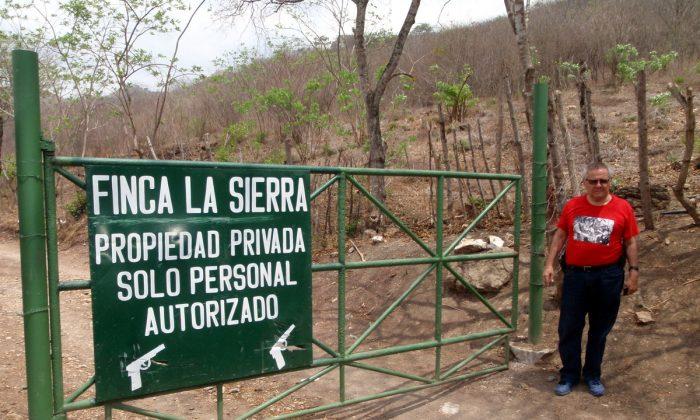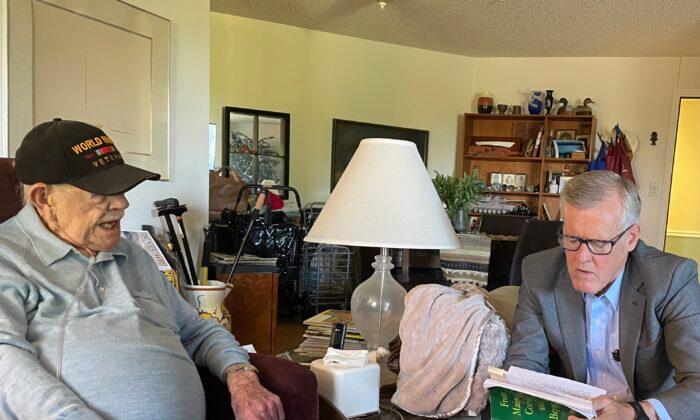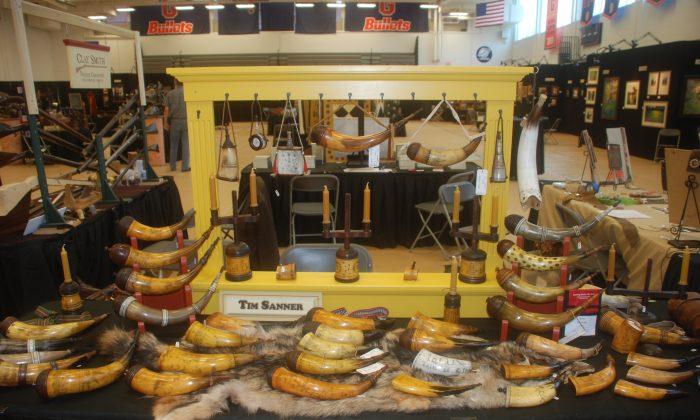The political order in Guatemala has been upended. The vice president has resigned, and so too have the minister of Energy and Mines and the minister of Environment and Natural Resources. The president is embattled and clinging to his office, attempting to stonewall accusations of corruption.
The mass demonstrations that have staggered Guatemala’s government are continuing. On July 25, thousands of students took to the streets of the capital, Guatemala City, to commemorate three months in which the people of Guatemala have protested corruption and demanded the president’s resignation.
During these three months a change in the nation’s political culture has become visible. The populace has shaken off the fear borne of the Guatemala Civil War, which left 200,000 dead or disappeared in the years 1960–1996, and embraced a spirit of activism.
A grass-roots movement to protect a nature preserve provided one of the earliest signs that something had changed in the people of Guatemala.
The actions of ordinary villagers helped uncover corruption among top officials. In the following months, as one instance of corruption after another was uncovered, the movement that has been sweeping the status quo out of office took shape.

El Arco
On Jan. 25, 2015, 2,000 unarmed protesters from the village of El Arco linked arms and peacefully marched up a steep mountain road toward the nature preserve of Sierra de la Minas.
For months the villagers had complained of illegal jade mining there and the resulting desecration of the protected biosphere. Officials had done nothing. This day the villagers decided to confront those destroying sacred land. They knew armed guards awaited them. None knew what would happen.
According to two individuals who took part in the protest, the foreign-trained, armed private security guards, and the agents of Guatemala’s National Civil Police (PNC) that protected the site, unaccountably abandoned their posts and fled upon the arrival of the marchers. Workers, many from the town and adjoining area, also left.
The protest was organized by former guerrilla leader César Montes. Montes is now the president of the Fundación Turcios Lima, which states its mission to be the relief of poverty and the achievement of social justice. In late May he took this reporter on a tour of the area.
He pointed out the well-equipped guard posts where guards had wielded automatic weapons. In a vast, cleared area was a large barracks for the guards. A helipad had been made in a clearing for flights into the site.
All this infrastructure was illegal in the protected forest and biosphere. So, too, were the six earthmoving machines used to scrape away entire mountain faces to mine the jade underneath.
Many more than 700 old-growth trees had been leveled. Huge boulders had been moved and deep pits dug.
Extensive use of heavy machinery had rendered entire sections of the protected biosphere barren. Montes and his colleagues said they could not fully grasp the extent of this clandestine destruction of public domain.
The illegality was flagrant. Guatemala’s law is clear: no excavation is permitted in the biosphere area, no removal of jade—even from private land—is permitted without a license. No sale or export of jade is permitted without a permit and license. In addition, no taxes had been paid to the government from the illegal operation.
Gas Attack
The villagers of El Arco were only allowed to enjoy their victory for a little over two weeks. On Feb. 10, hundreds of the PNC descended on the village.
Witnesses counted 34 vehicles, each with a contingent of 15 officers, entered the mountain town. They wore helmets and riot gear, were heavily armed, and were equipped with tear gas grenades.
The 2,300 inhabitants of El Arco were peaceful and unarmed. Most were children and older people. But the inhabitants stood together to block the PNC from going up the only road that led to the illegal jade mines on the mountain top.
For five hours, the PNC occupied the village.
“The PNC bombed tear gas into our school,” Blanca Lopez, a mother of three, said. “Patrol trucks and hundreds of anti-riot police entered El Arco on Feb. 10, 2015, at 10 o'clock in the morning.
“The community blocked them from going up the mountain. The PNC threw tear gas. Old people and children ran into the houses. People were asphyxiated. Children in the ”Guarderia,“ an infant preschool, were bombed with tear gas. The PNC were here until three in the afternoon throwing tear gas bombs into houses,” Lopez said.

The fire department was called to administer oxygen to children suffering asphyxiation.
Lopez’s aged father had just been released from the hospital when he was gassed in their house. “In my home more than fifteen tear gas bombs were thrown,” she said.
Lopez showed this reporter evidence of the exploded tear gas smoke bombs. The canisters bore the printed legend “6230 Riot CS Smoke. Combined Tactical Systems, 388 Kinsman Rd., Jamestown, PA 16134, telephone 724 932 2177.” Residents alleged that some 1,500 tear gas bombs were thrown into the village during the PNC occupation.
Worth More Than Gold
Jade is considered one of the most valuable gemstones in the world: Jadeite jade is worth more than diamonds and gold when found in its imperial green color.
According to legend, when Montezuma offered Spanish conquistador Hernán Cortés jade, it was refused and returned with arrogance. Spaniards sought gold, silver, and emeralds.
Montezuma’s remarks upon the conqueror’s rejection of jade express the value native people give the stone. “Thankfully these foreigners only want gold, leaving us our precious ‘chalchuites,’” Montezuma reportedly told his aides. The stone was worshiped by Guatemalan ancestors for its beauty as well as its spiritual attributes.
For Chinese, jade likewise holds great value. A recent sale at auction in Hong Kong of 27 jade beads formed into a necklace fetched $27 million.
Guatemala’s mountains and rivers in the Zacapa region sit on massive tectonic plates. The motion of those plates created upheavals over eons with pressure and heat suited to the formation of jade deposits.

Once one enters the jade region of Zacapa by driving along the “Carreterra al Atlantico,” Guatemala’s highway leading from the capital to the Atlantic Ocean port of Puerto Barrios, evidence is everywhere of jade deposits. Green stones litter the road’s shoulders and nearby fields.
“That’s serpentine,” a geological expert explained. “It was always thought that jade, real jadeite jade, existed where serpentine is found.” That’s how pioneers in the recent rediscovery of jade in Guatemala began their search.
Originally, jade discoveries were not thought important by Guatemalans or their government. It required many years to convince people that Guatemala had jade, the same jade known and used by the ancients discovered in Mayan tombs and archaeological digs. It required even more effort by these archaeologists to convince Guatemalans that it was a valuable natural resource.
After the rediscovery of sources of Mayan jadeite jade, an enterprise to make jade into carved objects and jewelry began. Entrepreneurs started to market it successfully. Today, there are several jade factories and retail stores headquartered in the old Spanish colonial city of Antigua, and they are a popular tourist attraction.
Other Illegal Mines
Once jade was found and its value recognized in Guatemala, it became a worthy prize to smuggle out through illicit front companies to Asia.
The despoilment of the Sierra de la Minas was not the first illegal jade mine in Guatemala.
A husband and wife team of American archaeologists arrived in Guatemala 41 years ago and began a three-year search for the source of Mayan jade (the husband is now dead, and the wife prefers her name not be used).
Chinese investors, whose extensive wealth influenced top Guatemalan officials, are alleged to have illegally used machinery to excavate jade on land in the Zacapa Mountains owned and licensed by the company formed by this couple.
Contemporary archaeologists, who wish their names withheld for fear for their own safety, began an investigation. They identified known criminals behind the theft of jade from licensed areas.
At great personal risk these archaeologists obtained export documents from Guatemala’s Pacific port, copies of which this reporter has reviewed. The documents reveal that jade was being shipped to Taiwan, Hong Kong, and various ports in China, breaking the Guatemalan ban on the export of jade. Complaints were made to public prosecutors.
Guatemalan authorities did little to stop the theft of jade from the licensed areas or the illegal exports. A legal complaint filed by the surviving American archeologist alleged that officials did not investigate her complaints of the illegal mining due to corruption.
Taiwan had made $70 million in grants to Guatemala for highway construction, which is alleged to have been a bribe to the Guatemalan officials. According to the Guatemalan press, the typical take for officials from such grants is 70 percent, with Guatemala only getting 30 percent.
It was later revealed that a parallel theft of jade was being organized through front companies to exploit jade resources near these licensed concessions. The surviving American archaeologist saw the miners at work.
As it became apparent that a new illegal jade mining operation was taking place not far from the legally licensed jade mining concessions that were being raided by thieves, the archaeologists made contact with Montes.
The first meeting was held in secret. An individual who prefers to remain anonymous attended the meeting and described what took place. It was revealed that Guatemala’s congressional investigators had begun looking into the allegations of illegal jade mining.
The congressional investigators described a legal thicket constructed to hide the identities of those behind the mining. They had identified a front company that had obtained title to land in the mountains above El Arco. The front company purchased a farm called Navajules. Although there was no money to back the check used to purchase the land, the title was transferred to another paper company called K-Rally.
The names of the politicians alleged to be involved in the illegal mining do not appear on the company documents, but the identification of K-Rally eventually led the investigators to Vice President of Guatemala Roxana Baldetti.
In addition, witnesses had observed Baldetti’s private secretary Juan Carlos Monzón (alias “robacaros,” or car thief) along with Baldetti’s son Mario Paz Baldetti alighting from a helicopter that landed on the helipad at the illegal jade excavation site in the Sierra de las Minas.

Two workers who had been employed at the mine for three months verified for this reporter that these two had visited the mine. The visit established a direction connection between Baldetti’s son and secretary to the illegal mine.
Montes later told this reporter he was shocked. The mining in the protected Sierra de la Minas biosphere finally made sense. It could only have taken place with the protection of ranking government officials.
On Jan. 25, Montes led the villagers of El Arco in their peaceful ascent to the illegal jade mine in Sierra de la Minas, blowing open to public view the illegal jade trade in Guatemala.
Scandals Mount
Beginning in April, various government scandals began to come to light.
When Baldetti was in South Korea April 13–16 with Korean jade operator César Kim and Monzón the press reported she was implicated in the theft of millions of dollars from a worthless Israeli-backed project to use chemicals to purify water in Lake Amatitlán. The so-called chemicals the Guatemala government paid 137 million quetzals for, or about $18 million, turned out to be nothing more than saltwater.
On April 16, a U.N.-sponsored panel of investigators broke up a ring in which officials allegedly took bribes to lower custom duties for businesses.
On April 24 the government canceled the water purification contract Baldetti is alleged to have profited from.
The news of the water purification and customs scandals touched a nerve in a public ready to respond. On April 25, in response to messages posted on social media, 60,000 people took to the streets of Guatemala City, the largest protest in Guatemala in 50 years. They demanded an end to government corruption, an end to official impunity, transparency, and the resignation of President Molina.
In the days and months that followed, protests big and small continued in towns and cities throughout the country.
In May the Guatemalan press reported how officials had awarded a $15.7 million contract for kidney dialysis to an incompetent firm in exchange for bribes. Eleven people died.
Other scandals reported in the press included: drug money being used to finance political campaigns and parties; a multimillion money-laundering ring; and allegations the health minister had caused the country’s health care system to collapse.
According to the Guatemala press, the front companies that organized the jade theft and export would have gotten away with their illegal activities, except for the reckless greed of the officials. The accumulation of one scandal on top of another has brought down the officials alleged to have protected the front companies.
Resignations
After the mass protests, on May 8, Baldetti was forced to resign. Her husband told the press that on the same day she resigned the U.S. government revoked the visas held by him, his wife, and their two sons.
Baldetti has gone to ground and has not commented on the alleged scandals.
The Guatemala minister of Energy and Mines and the minister of the Environment and Natural Resources also resigned. Monzón never returned from Korea and is a fugitive.
Arrests of other minor and major figures charged with various crimes involving fraud have been made, including two congressmen.
Candidates for the next presidential election in September 2015 have also been tainted by scandal, and a Supreme Court justice has been implicated.
Guatemala President Otto Pérez Molina has stonewalled criticism and resisted calls for his resignation, but his administration is in ruins.
In late February two young men involved in exposing the illegal jade mining were assassinated. These murders are just one indication that the situation in the country is unstable.
Guatemala has a history of repressive rule, and some Guatemalans fear the speed and extent of the corruption investigations may provoke a military coup to protect those in power.
Whether that coup takes place or not, the Guatemalan people have staked their claim to a different kind of politics, a claim that any future government will have to reckon with.
That claim was first expressed by a people’s crusade that, in seeking to protect one of the more beautiful places in Guatemala, exposed the first in a series of ugly national scandals. These scandals run as deep as the strip mining pits in the Sierra de las Minas mountains, inflicting scars that will remain on Guatemala’s natural and political landscape for years to come.
John Christopher Fine is a marine biologist with two doctoral degrees, has authored 24 books, including award-winning books dealing with ocean pollution. He is a liaison officer of the United Nations Environment Program and the Confederation Mondiale for ocean matters. He is a member of the Academy of Underwater Arts and Sciences in honor of his books in the field of education.






Friends Read Free